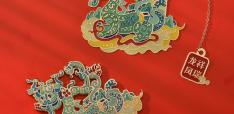China/US: A Chip Off An Old Block

Contrary to much of the media coverage, the launch of Huawei’s Mate 60 Pro likely does not mark a major SMIC breakthrough in chip manufacturing and is almost certainly geopolitically, not commercially, motivated. Further similar — and even self-harming — moves by Beijing may follow.
On the face of it, the front page headlines of 4 September suggest that my expert collaborator Dr Richard Windsor (Radio Free Mobile) and I have had it entirely wrong over China’s ability to overcome US semiconductor-related sanctions (see, e.g.: ‘China/US: Tit For Tat Part 2’ published on 1 September). Indeed, based on a teardown report of Huawei’s new Mate 60 Pro mobile phone by Techinsights, it is clear that SMIC has succeeded in building a 7nm chip, the Kirin9000s, to the surprise of investors and the consternation of the White House.
We cannot rule out a breach of US sanctions. However, we believe that the more likely scenario is as follows (borrowing extensively from Richard’s 7 September note to his clients):
- China has not developed, or got hold of, extreme ultraviolet (EUV) equipment needed to manufacture in bulk commercially viable chips at 5nm and below.
- Rather, SMIC has figured out how to use less advanced deep ultraviolet (DUV) kit, which was only subjected to sanctions last October and which China therefore has in abundance, to manufacture 7nm chips and, possibly, even 5nm.
- This involves techniques known as double- and multiple-patterning which Intel tried several years ago at considerable cost, ceding its position as the world’s leading chip-maker to TSMC and remaining to this day, generations behind.
- The technique does not work well to the point where for every chip which works many do not, thereby pushing up the cost of a working chip beyond commercial viability.
In short, we believe that the Kirin9000s is most likely the semiconductor equivalent of a ‘chip off the old block’, i.e. dependent on ‘old’ technology which falls short. As Richard concluded:
“If Huawei is to start regaining share in the Chinese market with the Mate 60 Pro, as is widely being speculated, it will need millions of these chips, and I am not convinced that SMIC will be able to make them. Even if it could, I am still far from convinced that a Kirin9000s chip that does not support 5G will be able to compete against the likes of Oppo, Vivo, Xiaomi etc., all of whom have access to the best that Qualcomm and MediaTek have to offer. At 7nm, the Kirin9000s will be bigger, more expensive, and more power-hungry with lower performance than the flagships of its rivals. This means that as long as Chinese consumers act rationally, they would not choose the Mate 60 Pro over those of its competitors and the device will ship in very low volumes.”
The issue of consumer choice bears on the second big tech-related headline of the week, the slump in Apple’s share price following reports that China is banning its products from government buildings. For a detailed argument as to why last week’s sell-off of both Apple and Qualcomm was overblown, I commend Richard’s 8 September note ‘China vs USA — Sucker Punch’, available on the RFM website. Suffice it to reflect here his conclusion that:
“…the release of the Huawei Mate Pro 60 and the revelations about its silicon [do not] change the competitive landscape meaningfully either in China or overseas. What has changed is the media chatter, propaganda and speculation which never looks further than skin deep and has impacted market sentiment.”
It follows that I agree with Richard entirely that:
“…the Mate 60 Pro’s main function is geopolitical… [It] is being used by China as evidence that it can develop cutting-edge technology without any help from or use of US technology”.
The biggest single consequence of this will not, therefore, be Chinese self-sufficiency in advanced semiconductors, which remains a real stretch, but a growing bifurcation in technology standards, as Richard and I have been forecasting since our first ‘Clash of the Titans’ report in 2019. With the US and its allies continuing to tighten the sanctions screw, few, if any, third countries are likely to opt for China’s (sub-)standards even where the price tag is substantially lower.
This being said, I am a little more cautious than Richard about whether or not the authorities in China would risk incurring consumer wrath by imposing an outright ban on Apple products, and/or damage to domestic companies by similar on Qualcomm. After all, we are talking about a regime which is considering passing a law banning clothing which is “detrimental to the spirit of the Chinese people” despite a flurry of online criticism.
In turn, this takes me to what Leo Lewis, writing in the Financial Times on 7 September, characterised as:
“…one of the most consistent framings of the China question being put to the experts and analysts…whether China’s economy is undergoing ‘Japanification’”.
Mr Lewis goes on to cite a number of factors which are relevant to such a determination. It will come as no surprise that I am entirely in agreement with his emphasis on the “soured geopolitics” with the US as a potentially “critical” difference. However, I think he still misses an even more critical factor, i.e. the stark contrast in the nature of governance between the two countries. Whatever one thinks of Japan’s ruling LDP and its successes and failures during what has been by any democratic standards a protracted period in power, it is very far removed from the Chinese Communist Party and President Xi Jinping’s determination to see it remain in power in perpetuity at, seemingly, any price.
On numerous occasions over the past year, I have sided with the view of what I believe to be a growing number of experts that China has been turning increasingly inwards since Xi Jinping first started his drive for self-sufficiency in his all-embracing quest to sustain the CCP’s grip on power. Most recently in a note published by Heteronomics on 5 September, I drew on an essay by Ian Johnson which was published in Foreign Affairs on 22 August. Especially given the importance of the ‘Japanification’ debate to investors, I make no apology for repeating therefrom the following extract:
“For more than a year, economists have argued that China is embarking on a period of slowing economic growth…. The implication is often that if only Beijing would tweak its economic management, it could mitigate the worst outcomes and avoid a more dangerous decline. What this analysis overlooks is the extent to which these economic problems are part of a broader process of political ossification and ideological hardening. For anyone who has observed the country closely over the past few decades, it is difficult to miss the signs of a new national stasis, or what Chinese people call neijuan. Often translated as ‘involution’, it refers to life twisting inward without real progress. …neijuan now permeates all aspects of life in Xi’s China, leaving the country more isolated and stagnant than during any extended period since Deng launched the reform era in the late 1970s.”
Such determination to demonstrate the supposed superiority of China’s system of governance suggests to me that investors would do well to take note of an overarching point made by Yale University’s Odd Arne Westad in Foreign Affairs last June, and quoted in my 21 June note for Heteronomics, ‘China: Knowns and Unknowns’, as follows:
“Today, even economic growth is less important than party power. For instance, controlling big companies is necessary even if it leads to them being less productive and profitable.”
As I concluded in that note, the big issue for investors is to figure out what they know and what they don’t know about Chinese decision-making. As last week’s news flow confirms, nowhere is this more so than in the context of the China/US technology war.
Photo by Marlene Leppänen


